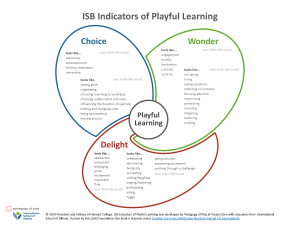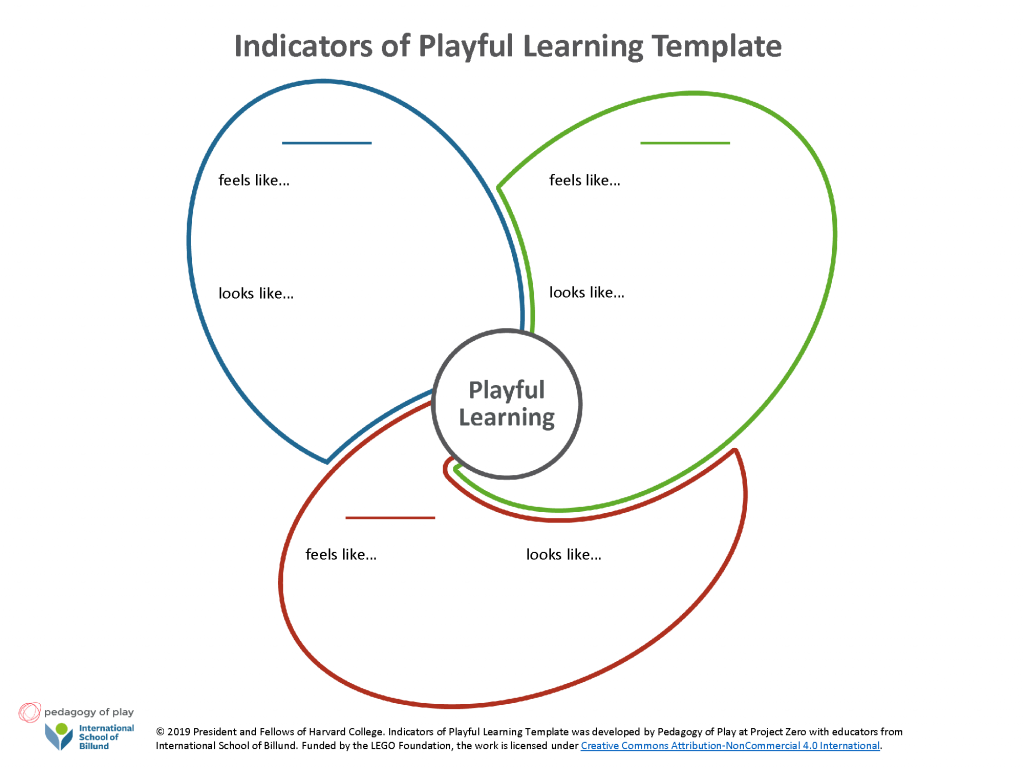ISB Indicators of Playful Learning
What does learning through play look like?
The relationships between play, playfulness, and learning are complex. For instance, not all play is playful (e.g., a child re-enacting a traumatic event). Not all that might be considered playful resembles what would ordinarily be called play (e.g., a conversation). Although play often supports learning, some kinds of play can also undermine targeted learning.
Based on a review of the research literature, analysis of video from ISB classrooms, observations, interviews and many conversations, we have come to a common understanding of learning through play. Although it is difficult to pinpoint exactly when learning through play is happening, we have identified three core indicators—choice, wonder, and delight—and believe that when all three are “in play,” playful learning is most likely occurring.
You can also use the indicators as a tool for curriculum planning.
Make it your own
This model is by no means static. Already it has been through several iterations at ISB, and has been re-imagined as part of PoP’s work in South Africa. In recognition of the fact that learning through play is shaped by culture, we invite you to create a version that fits the needs (or language) of your school!
